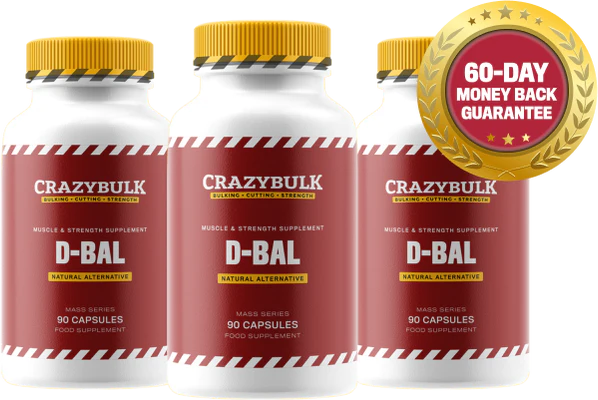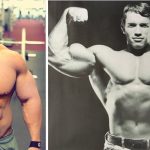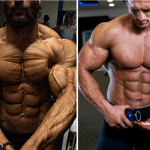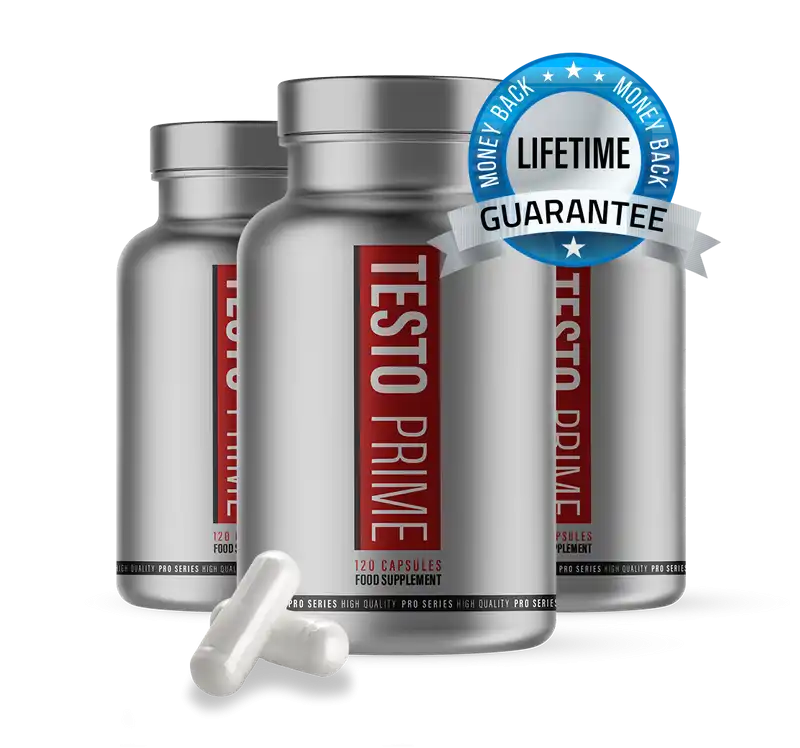The Silver Era of Bodybuilding, often recognized as the period from the mid-1940s through the 1960s, marked a significant shift in the world of fitness, laying the foundation for modern bodybuilding.
This period was characterized by classic physiques, flaunting a harmonious blend of size, symmetry, and conditioning that has remained iconic in the bodybuilding industry.
The Silver Era wasn’t just about the physical aesthetics—it marked the rise of holistic approaches to fitness, integrating disciplined training routines, meticulous diet plans, and an overall dedication to the art of bodybuilding.
In this article, we delve into this transformative period, exploring the legends of the era, their training routines, dietary regimes, and the lasting impact they’ve had on the fitness world.
Famous Figures of the Silver Era
The Silver Era of bodybuilding saw the rise of some iconic figures whose influence transcends time.
BULKING or CUTTING? We teamed up with the number one bodybuilding supplement brand on the market to help you take your results to the next level. A free custom supplement plan designed to enhance your results.
These champions of the era not only possessed awe-inspiring physiques but also revolutionized the approach towards body fitness.
One cannot talk about the silver era without mentioning the legendary Reg Park. This British powerhouse was a three-time Mr. Universe, with a physique that was both massive and symmetrical.
His training methodologies, often referred to as the ‘Reg Park’s 5×5 program’, continue to influence modern bodybuilding practices.
Another giant of the era was Steve Reeves, often considered one of the most aesthetically pleasing bodybuilders of all time.
Reeves’ classic, well-proportioned physique became the gold standard for many, his training philosophy emphasizing balance and proportion over sheer mass.
My Top Recommended Supplements
Still, the list is incomplete without Bill Pearl, a four-time Mr. Universe.
Known for his broad shoulders and narrow waist, Pearl embodied the essence of the Silver Era’s emphasis on symmetry and proportion.
His dedication to the sport and commitment to nutrition set a new precedent in the bodybuilding community.
These gentlemen, along with other noteworthy names like Larry Scott and Sergio Oliva, made the Silver Era a truly golden time in bodybuilding history.
Their disciplined approach to training, their meticulous attention to diet, and their unwavering dedication to the sport set the stage for the generations that followed.
Training Routines in the Silver Era
The training routines in the Silver Era were as unique as the bodybuilders themselves, marked by a blend of simplicity, intensity, and consistency.
One of the most common programs from this era was the full-body workout, a regimen employed by many of the era’s champions including Reg Park and Steve Reeves.
These workouts typically involved three weekly sessions, each session comprising of a range of exercises targeting the entire body.
The 5×5 routine, made popular by Reg Park, was another common training routine, comprising of five sets of five reps for each exercise.
This routine was designed to increase both muscle size and strength, emphasizing compound movements like squats, deadlifts, bench press, and barbell rows.
Hands down the top-rated testosterone booster supplement for men who want faster muscle growth.
Volume training also had a significant presence during the Silver Era.
Championed by bodybuilders such as Bill Pearl and Larry Scott, this method involved performing a high number of sets for each body part, often more than 20 sets per workout, with a moderate number of repetitions.
Legal muscle-building supplement that's designed to mimic the effects of dianabol without all side effects.
This type of training pushed the bodybuilder’s endurance and stimulated muscle growth.
In stark contrast to today’s trend of isolating muscle groups, the Silver Era bodybuilding routines focused more on compound movements.
These workouts were seen as a more effective way to build a balanced, symmetrical physique, reflecting the era’s emphasis on overall proportion and aesthetics.
They believed in working the body as a unit, thus developing a harmonious muscular balance.
The routines were demanding, but the results were legendary, shaping the iconic physiques we remember and admire today.
Example Routines from the Silver Era
Here are a couple of representative workout routines from the Silver Era, illustrating the style and intensity of their training:
Reg Park’s 5×5 Routine
- Squat: 5 sets x 5 reps
- Bench Press: 5 sets x 5 reps
- Deadlift: 5 sets x 5 reps
- Barbell Rows: 5 sets x 5 reps
- Overhead Press: 5 sets x 5 reps
- Pull-ups: 5 sets x 5 reps
Steve Reeves’ Full-Body Routine
- Dumbbell Swing: 3 sets x 15 reps
- Upright Row: 3 sets x 15 reps
- Squat: 3 sets x 10 reps
- Bench Press: 3 sets x 10 reps
- Deadlift: 3 sets x 10 reps
- Chin-ups: 3 sets x 10 reps
- Barbell Curls: 3 sets x 10 reps
- Tricep Dips: 3 sets x 10 reps
Bill Pearl’s Volume Training Routine
- Bent-Over Rows: 4 sets x 6-10 reps
- Barbell Bench Press: 4 sets x 6-10 reps
- Overhead Barbell Press: 4 sets x 6-10 reps
- Barbell Squats: 4 sets x 6-10 reps
- Barbell Deadlift: 4 sets x 6-10 reps
- Barbell Curls: 4 sets x 6-10 reps
- Triceps Extension: 4 sets x 6-10 reps
- Calf Raises: 4 sets x 15-20 reps
Larry Scott’s Split Routine
- Monday & Thursday (Chest, Back, Shoulders)
- Bench press: 4 sets x 6-10 reps
- Bent-over row: 4 sets x 6-10 reps
- Military press: 4 sets x 6-10 reps
- Pull-ups: 4 sets x 10-15 reps
- Dumbbell flyes: 4 sets x 10-15 reps
- Tuesday & Friday (Arms, Legs)
- Squat: 4 sets x 6-10 reps
- Barbell curls: 4 sets x 6-10 reps
- Triceps pushdown: 4 sets x 6-10 reps
- Leg curls: 4 sets x 10-15 reps
- Calf raises: 4 sets x 15-20 reps
These routines highlight the Silver Era’s focus on comprehensive, full-body workouts that target multiple muscle groups in each session, contributing to the balanced, symmetrical physiques characteristic of the time.
Diet and Nutrition in the Silver Era
The diet and nutrition of the Silver Era bodybuilders played a pivotal role in shaping their iconic physiques.
As rigorous as their training routines were, these champions recognized that without proper nutrition, their efforts in the gym would bear little fruit.
The dietary regime in the Silver Era predominantly focused on consuming whole, nutrient-dense foods, while processed and junk food was largely shunned.
High-Protein Diet: In order to support muscle growth and recovery, bodybuilders of this era prioritized protein in their diet.
Foods like lean meats, fish, eggs, and dairy products were common staples. Some bodybuilders, like Reg Park, were known to consume as much as two grams of protein per pound of body weight each day.
Carbohydrates for Energy: Carbohydrates were viewed as essential energy sources, needed to fuel intense workouts and replenish glycogen stores.
Whole grains, fruits, and vegetables were the most common sources of carbohydrates in a Silver Era bodybuilder’s diet.
Healthy Fats: Unlike some modern-day diets that often demonize fats, Silver Era bodybuilders recognized the importance of including healthy fats in their diet.
Fats were needed for hormone production (including testosterone), which is crucial for muscle growth. Sources of healthy fats included nuts, seeds, and oils like olive oil.
Vitamins and Minerals: Consumption of a variety of fruits and vegetables ensured that the bodybuilders got an ample supply of vitamins and minerals.
These essential nutrients were needed for optimal body function and recovery from workouts.
In summary, the Silver Era bodybuilders followed balanced diets that were rich in high-quality proteins, complex carbohydrates, healthy fats, and a broad spectrum of vitamins and minerals.
They understood that nutrition was the bedrock of their success, and they approached their diet with the same discipline and dedication that they brought to their training.
This wholistic, no-nonsense approach to dieting formed the cornerstone of their muscle-building philosophy, a legacy that continues to inspire and inform bodybuilders to this day.
Example of a Day’s Diet for Silver Era Bodybuilders
To provide a clearer understanding of the Silver Era bodybuilder’s dietary regime, here is an example of what a day’s diet may have looked like:
Breakfast:
- Scrambled eggs (6 eggs)
- A serving of cooked oatmeal
- Fresh fruit (e.g., a banana or an apple)
- A glass of fresh milk
Mid-Morning Snack:
- A handful of nuts (e.g., almonds or walnuts)
- A protein shake made with whey protein and milk
Lunch:
- Grilled chicken breast
- A large serving of vegetables (e.g., broccoli or spinach)
- A portion of brown rice
Afternoon Snack:
- A serving of Greek yogurt
- Fresh berries
Dinner:
- Grilled fish (e.g., salmon or mackerel)
- A serving of sweet potatoes
- A large serving of vegetables (e.g., carrots or Brussels sprouts)
Evening Snack:
- A protein shake made with whey protein and milk
This diet provides a good balance of protein for muscle growth and recovery, carbohydrates for energy, and fats for hormone production.
It also offers a variety of vitamins and minerals from fruits and vegetables, contributing to overall health and well-being.
Remember, this is just an example and individual dietary needs can vary based on factors such as body weight, workout intensity, and specific fitness goals.
Impact of the Silver Era on Modern Bodybuilding
The Silver Era of bodybuilding is broadly recognized as the foundational period that significantly shaped the future of bodybuilding.
It brought about a paradigm shift in the way people perceived the sport, transforming it from a niche activity into a global phenomenon.
The athletes of the Silver Era, with their classical aesthetic and emphasis on balance, symmetry, and proportion, introduced a standard of physical excellence that continues to define the ideal physique in bodybuilding.
The likes of Reg Park, Steve Reeves, Bill Pearl, and Larry Scott became icons, influencing generations of bodybuilders and fitness enthusiasts through their training philosophies and dietary principles.
Their routines, favoring full-body workouts and compound movements, emphasized the importance of engaging multiple muscle groups for balanced development.
This philosophy continues to inform modern training regimens, inspiring proponents of functional fitness and movement-based training.
The principle of high-volume training, characterized by multiple sets and repetitions, is another legacy from the Silver Era that is still widely practiced in contemporary bodybuilding.
Additionally, the Silver Era emphasized the cardinal role of nutrition in achieving desired physiques.
The focus on whole foods, balanced diets, and the importance of adequate protein, carbohydrates, and fats laid the groundwork for contemporary nutritional strategies in bodybuilding.
This era debunked myths about fat consumption, highlighted the need for post-workout recovery nutrition, and underscored the importance of vitamins and minerals for overall health and well-being.
In essence, the Silver Era of bodybuilding significantly impacted the sport, shaping its principles, practices, and aesthetics.
The legacy of this era continues to inspire and guide, reminding us of the timeless principles of discipline, hard work, and holistic health that are at the heart of bodybuilding.
References
- Fair, J. D. (1999). Muscletown USA: Bob Hoffman and the Manly Culture of York Barbell. Penn State Press.
- Roach, R. (2018). The Golden Age of Bodybuilding: The Incredible Inside Stories of the Legendary Bodybuilders of the 1960s and 1970s. Independently Published.
- Little, J. (2013). The Timeless Secrets of Mike Mentzer: The Art, Science and Philosophy of a Bodybuilding Legend. McGraw Hill Professional.
- Park, R. (2007). Reg Park’s Three Step Bodybuilding System. IronMind Enterprises, Inc.
- Stern, S. (2018). The Silver Era of Bodybuilding: New Insights into the Sport of the Gods. Independently Published.










